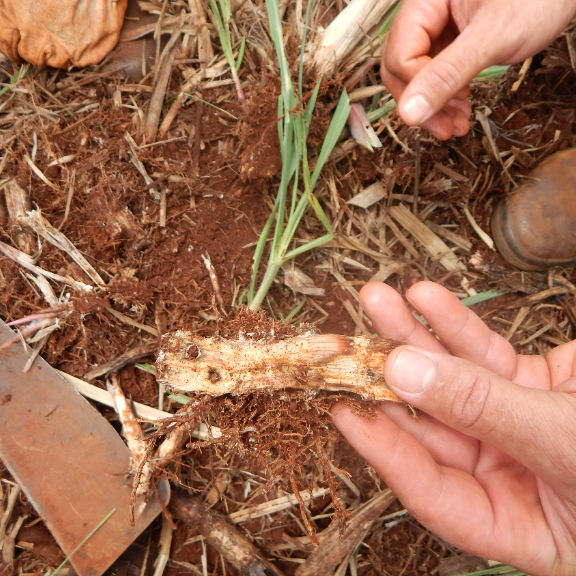Nutrient Deficiency Assessment
Nutrient deficiencies can significantly impact the growth, development, and yield of sugarcane. The effective assessment of nutrient levels in the soil and plants is a critical aspect of sugarcane crop management. Here's a detailed exploration of the nutrient deficiency assessment process:
1. Soil Testing: The foundation of nutrient deficiency assessment lies in soil testing. Conduct thorough soil analyses to evaluate the levels of essential nutrients such as nitrogen, phosphorus, potassium, sulfur, and micronutrients. Soil testing provides a baseline understanding of nutrient availability in the cultivation area.
2. Plant Tissue Analysis: Supplementing soil testing, plant tissue analysis offers insights into the nutrient status within the sugarcane plants. Collect samples from different parts of the plant, especially leaves, and analyze them for nutrient concentrations. This aids in identifying specific nutrient deficiencies impacting the crop.
3. Symptom Recognition: Visual symptoms on the sugarcane plants can serve as indicators of nutrient deficiencies. Yellowing or discoloration of leaves, stunted growth, and abnormal leaf patterns are common signs. However, these symptoms can sometimes overlap, necessitating more precise assessments through testing.
4. Nutrient Mobility: Understanding the mobility of nutrients within the sugarcane plant is crucial. Some nutrients, like nitrogen, are mobile and can translocate within the plant, leading to characteristic symptoms on older leaves. In contrast, immobile nutrients, such as calcium, tend to show deficiency symptoms in newer growth.
5. Corrective Measures: Upon identifying nutrient deficiencies, corrective measures can be tailored to address specific needs. Adjust fertilization practices to supplement deficient nutrients. Foliar applications, soil amendments, and precise nutrient management plans help rectify imbalances and promote healthy growth.
6. pH Adjustment: Soil pH plays a vital role in nutrient availability. Assess the pH levels of the soil, as extreme acidity or alkalinity can hinder nutrient uptake. Lime or sulfur applications may be necessary to adjust pH, ensuring optimal nutrient absorption by the sugarcane plants.
7. Micronutrient Considerations: Micronutrient deficiencies, although required in smaller quantities, can significantly impact sugarcane health. Regularly assess the levels of micronutrients like iron, zinc, manganese, and copper. Targeted micronutrient applications can correct deficiencies and enhance overall plant vigor.
8. Monitoring Over Time: Nutrient deficiency assessment is an ongoing process. Regular monitoring over the growing season allows for adjustments to nutrient management plans based on the changing needs of the sugarcane crop. Adjustments may be necessary during different growth stages.
9. Sustainable Practices: Incorporate sustainable nutrient management practices. This includes organic matter additions, cover cropping, and crop rotation to enhance soil health and nutrient availability. Sustainable practices contribute to long-term nutrient balance and reduce the risk of deficiencies.
10. Technology Integration: Leverage technological advancements for precision agriculture. Sensor technologies, such as drones and satellite imagery, can provide spatial information on nutrient distribution within the field. Integrating technology enhances the efficiency of nutrient deficiency assessment.
11. Expert Consultation: In complex cases or when facing persistent nutrient management challenges, seek guidance from agricultural experts. Agronomists and soil scientists can provide tailored recommendations based on comprehensive assessments and analyses.
In conclusion, a robust nutrient deficiency assessment strategy is pivotal for optimizing sugarcane yields and quality. By combining soil testing, plant tissue analysis, symptom recognition, and corrective measures, farmers can proactively manage nutrient levels, ensuring the health and vitality of their sugarcane crops.

